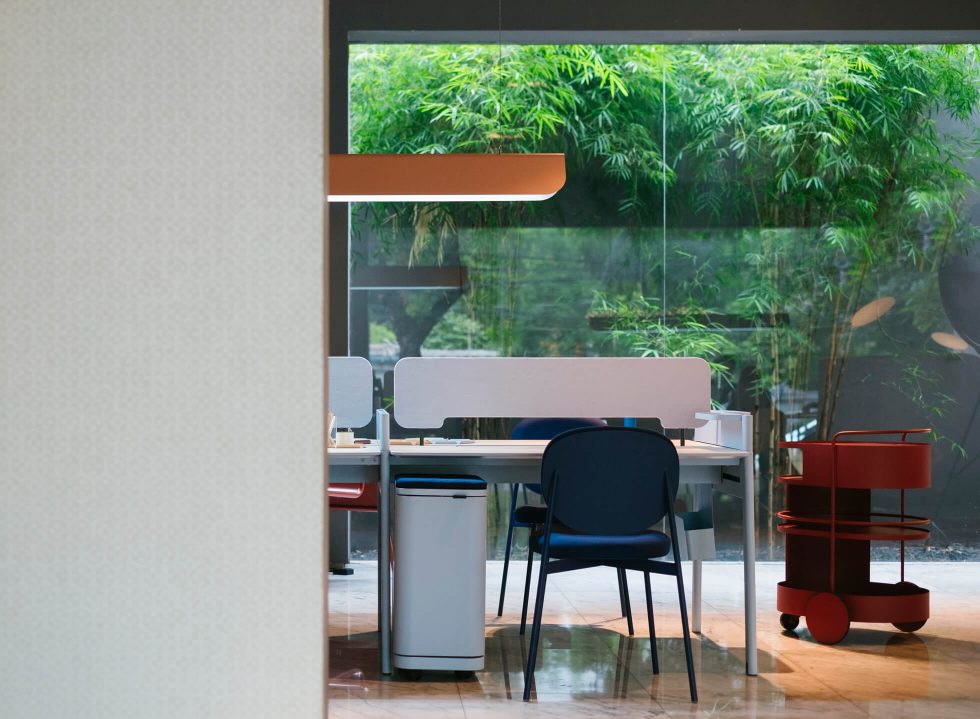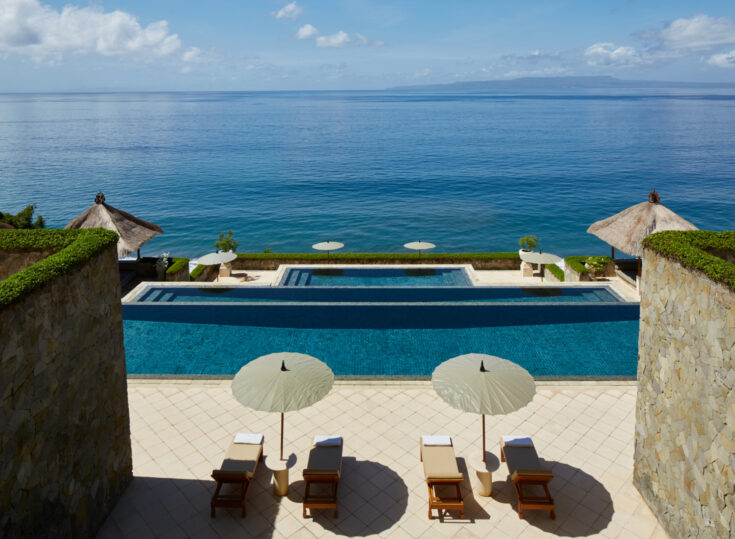In today’s work environment, the idea of being chained to a single workstation for eight hours straight just doesn’t cut it anymore. Some of the world’s popular headquarters, like Google and Facebook, are well-known for their ‘resimercial’ design (a furnishing style that brings the comfortable feel of residential furniture into the workspaces) as they strike one as a home or playground instead, redefining the standard of what a workplace could look like.
Indeed, the line between work and leisure is blurring, as the need for flexible and open working spaces become even more visible in the modern-day workforce. This is something realised by Malka, as the Jakarta-based metal engineering company brings Materium, a furniture collection that aims to bridge the gap between work and leisure, to life. In collaboration with DMDIO, the sister company of interior design firm Domisilium Studio (lauded for their design of the Go-Jek headquarter), and branding executed by Thinking*Room studio, this shared concept and vision transpired beyond a mere furniture collection.
Designed by the team at DMDIO, gentle curves and muted colours put a soft edge on the collection’s expansive range of furniture, as seen from their temporary showroom at Vastuhome in Pakubowono. Comprised of three sections: Work Living Collection, Office Collection and Accessories, the collection ranges from workstations, privacy sofas and cabinets, to chairs, trolleys and coffee tables. Moreover, pieces in the collection are produced through metalwork, transforming the usually rigid and solid material into something cordial and subtle for a change.
Take the Dominium Rolling Drawer, which comes in fresh colours like terracotta and pastel mint green, a multi-purpose storage unit that is both pleasing to the eye and also moveable to use. Or the Solatium Privacy Sofa, a perfect seating booth for brainstorming sessions due to its high backrest and side panels; comes in a soft palette of beige, blue and green, their stylish design also adds a touch of playfulness to any space beyond work settings.
“We wanted to move out of that strict, traditional office settings because that’s what we’ve been doing for the past 40 years,” said Del J. Mear, marketing director of Malka, whose projects span from airports, malls and hotels to infrastructure. “We wanted to look into things that have a feeling of a co-working office—a place that one would feel comfortable to spend time in, and not just a place one goes to for work. That was something DMDIO and Thinking*Room understood immediately and were able to embrace with us.”
The feeling’s mutual from the get-go, with Santi Alaysius, co-founder and principal interior design of DMDIO, also seeing the work-living lifestyle echoing in today’s work culture. “The way people work right now is so much different than it was before. Nowadays, people are not as formal anymore and professionalism is more relaxed,” said Santi, pointing out her own company’s work culture, whereby employees would stay back at the office while ordering food or watching Netflix at the conference room. “Materium works to support that good, homey environment in the working spaces.”
The collection, aptly and wittily named with a suffix-ium (a wordplay on the element that describes metal components), was created through 18 months process of going back and forth; this includes numerous prototyping and trials and errors—to name, the chairs in the collection. “A lot of iterations are done to get them where they are today. We had a version where we changed the angle of the chair to make it more comfortable. Another version was changing the density of the cushions. It takes a process to find out what fits and makes it consistent,” said Del J.
Hence, a dedicated research & development team from each company worked to ensure the visual and functionality of the furniture along with its concept presentation bode well, something that Santi personally takes pride in. “This is something that is lacking in our local products: the research & development process. Many don’t take the time to get the right result. That’s why I’m very satisfied [with the collection] because everybody really cares about the process. Everybody is just so in-sync, from the research and trial and error to the time committed and mind invested.”
Visualising a contemporary lifestyle through furniture is no easy feat but the team at Thinking*Room has managed to translate how Materium’s pieces work in more ways than one through its concept packaging. “We want to send a message about the culture of working,” said Ritter Willy Putra, art director of the said studio. “Our job is to make sure that while we want to hard-sell the products, we also want to present them beyond the general use of furniture, and as something that involves a lot of lifestyle in it.”
So what’s next for Materium? The premise from the start is that it’s a living collection, so it has to evolve, according to Del J. “We’ll see how the market responds to it, which has been good so far. But this will keep growing, and there’ll be something to add into as we go. We’re going to see what pieces need to be added and if there are any gaps that need to be filled. It’s a living thing and it will evolve.”
There’s no one-size-fits-all mold that can cater to how people work nowadays. Many are seeking freedom, mobility and comfort in the working spaces and Materium translate them in spades: work and leisure can be bridged, and comfortable furniture, as simple as a chair, can act as an oasis, even on a busy workday.


















